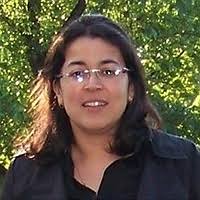Bio

CV
Publications

Ferromagnetism in Cr-doped passivated AlN nanowires
Ferromagnetism in Cr-doped passivated AlN nanowires
Understanding the Numerical Resolution of Perturbed Soliton Propagation in Single Mode Optical Fiber
Handbook of research on nanoscience, nanotechnology, and advanced materials
Understanding the Numerical Resolution of Perturbed Soliton Propagation in Single Mode Optical Fiber
DFT characterization of cadmium doped zinc oxide for photovoltaic and solar cell applications
Presentations

Calendar

Announcements

Classes

This course serves as a science elective to help students fulfill part of their science requirements. It consists of an introduction to astronomy from a predominantly descriptive perspective; quantitative parts will be included whenever conducive throughout the semester. The level of mathematics required form the student is pre-calculus; without it, the student will not be able to follow the quantitative parts of the course. The topics to be covered will include the night sky, telescopes, the solar system and its formation theories, the life cycle of stars, galaxies and the general structure of the universe, and an introduction to cosmology.
EE 209: Applied Electromagnetics
The course presents the principles of electromagnetic (EM) fields and their propagation, power and energy content, and properties in guided and unguided structures. The course begins by review of work and fields, complex numbers and phasors. The course aims to build a bridge between circuit theory and the EM material through the detailed treatment transmission lines. The course then covers vector analysis and orthogonal coordinate systems, and introduces Maxwell’s equations for the general case of time-varying fields. Properties of electrostatic and magnetostatic fields and laws, and electric and magnetic boundary conditions are then studies in details
MNT511 :Renewable Energy Storage Systems
Students will be exposed to a broad brush of topics related to energy and environment with a focus on a societal problem of great current concern—namely, the use of energy and the local, regional, and global environmental effects that use engenders. Students will become familiar with the modern technology being used to ameliorate these adverse environmental effects. It enables the student to integrate this understanding into an appreciation of both the technology and science that must be employed by nations to maintain a livable environment while providing improved economic circumstances for their populations. In our life of every day, we see these forms. For examples a rechargeable battery stores readily convertible chemical energy to operate a mobile phone. Even food(which is made by the same process as fossil fuels) is a form of energy stored in chemical form.Energy storage is a dominant factor in economic development of our country and life. The main target of the present course is to assess and understand the process behind the most important (and well known) forms of storing energy. We will focus on solar cells as devices for storing solar energy in order to understand their functioning mode for photovoltaic applications.
This is introductory course in polymer in energy, environment and biomedical studies will focus on polymeric manufacturing procedures, characterization, and applications. It will include different types of synthetic techniques that are commonly used in modifying the polymer matrix composites.
This course focuses on the fundamentals of Nanoscience and Nanotechnology such as the basic properties of nanoparticles, structural control of nanoparticles and environmental and safety issues with nanoparticles. In addition, this will introduce the students to the synthesis and characterization of nanomaterial for possible applications in Nanotechnology.
Moreover, this course will also focus on the current and future nanotechnology applications in engineering, materials, physics, chemistry, biology, electronics, and energy
LSR 421 and consecutive LSR 422 courses represent a two-semester-term individually guided investigation project involving laboratory work and/or computational investigation in specific aspects of experimental and theoretical biomedical sciences. The background, results and conclusions of the study are reported in the form of an oral presentation in the second half of spring semester and a thesis, submitted at the end of the course, which includes a review of relevant literature, data presentation and analysis and discussion. Course subject and materials are individually designed for each enrolled student by supervisor. This course develops transferable skills, associated with laboratory-based experimental project work in Biomedical Sciences.
This course is the first of a two-semester sequence that introduces the basic concepts of algebra-based physics. It deals in essence with classical mechanics. The topics covered include particle kinematics and dynamics; conservation of energy and linear momentum; rotational kinematics and angular momentum; fluids; simple harmonic motion and waves
This course is about the nature of motion, and the constituents of matter. The motion of a ball in the air, a car on the street, and the Moon in the sky seem familiar to all. However, many of the ways we initially think about these motions do not lend themselves to quantitative analysis, nor do they allow us to think about all these phenomena in a unified way. If one retrains one’s thinking to a disciplined approach in terms of position, velocity, acceleration, and force, all motion, from the smallest molecule to the largest galactic cluster, may be seen to share a common description. One may apply this understanding to such disparate topics as the flow of blood in veins, bridge design, the banking of race car tracks, and the air conditioning of an Alfaisal University classroom on a hot summer day. These phenomena are the stuff of everyday life, they are of great value throughout science and technology, and mastering these concepts is great fun!

